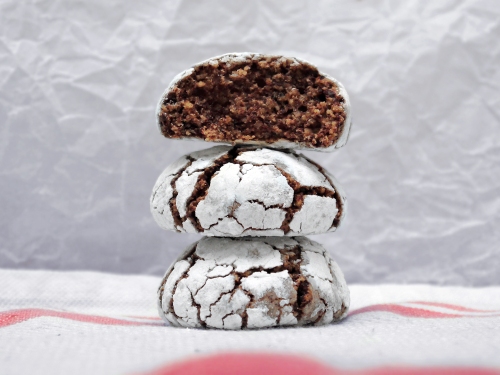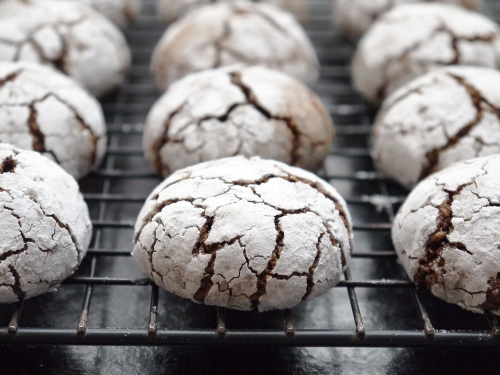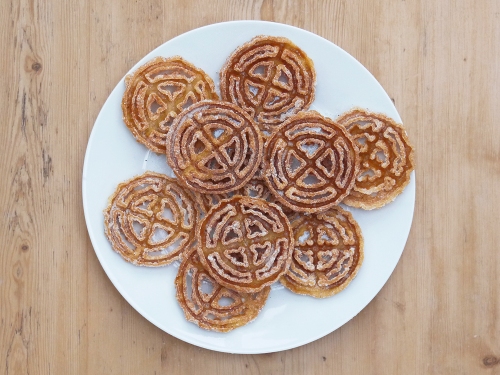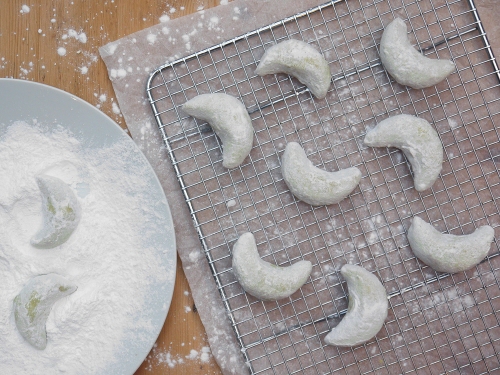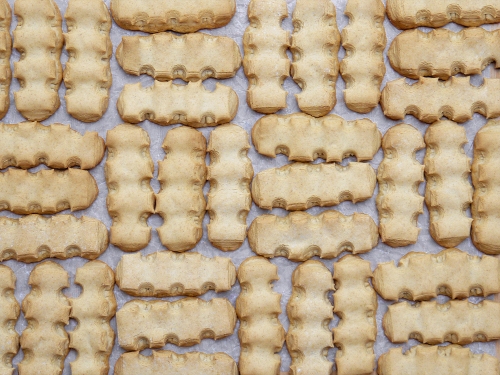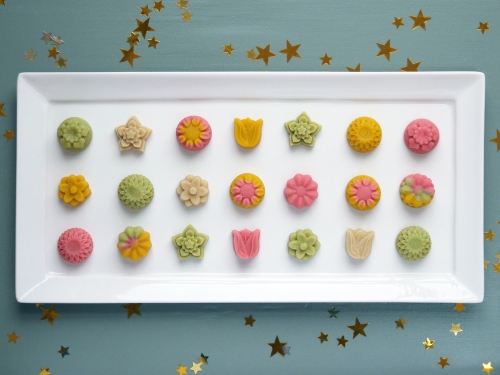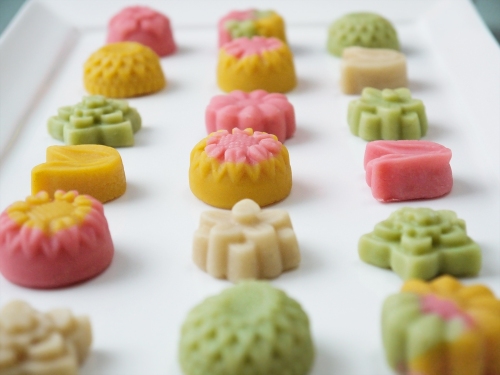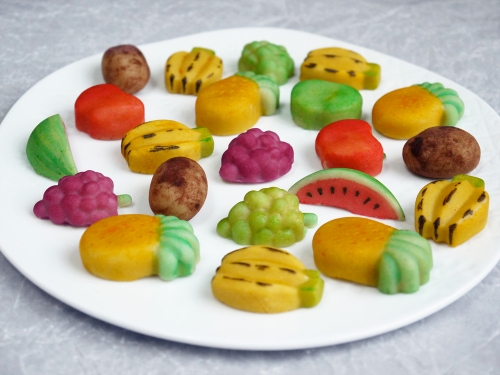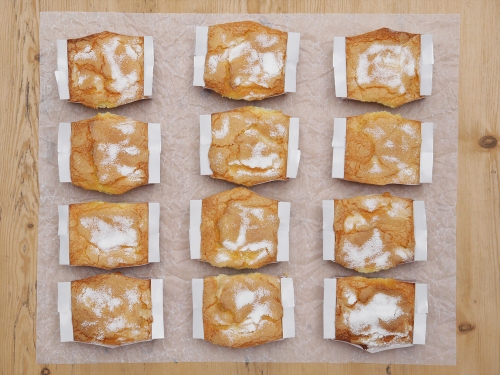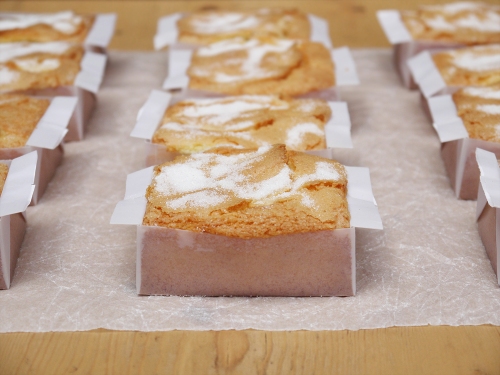We’ve made it to the end of another instalment of the 12 Days of Baking! This cycle has gone on a little longer than I planned and well into the New Year, but I’d rather that than pile on the stress of trying to do everything by Christmas Eve. Also, spreading things out gives friends and family a sporting chance of being able to enjoy what I bake, rather than turning it into an endurance event whereby cookies need to be eaten as fast as they are made…
To bring things to a conclusion, we’re finishing with a classic Italian cookie: pignoli.
These morsels are delicious almond cookies, crisp and lightly golden on the outside and with a soft and chewy centre. They are generously coated in pine nuts which toast lightly in the oven. They are simultaneously simple and luxurious. I love their festive appearance which will look good on any cookie tray, but they are equally at home any time of the year with a cup of good coffee for a quiet moment of reflection.
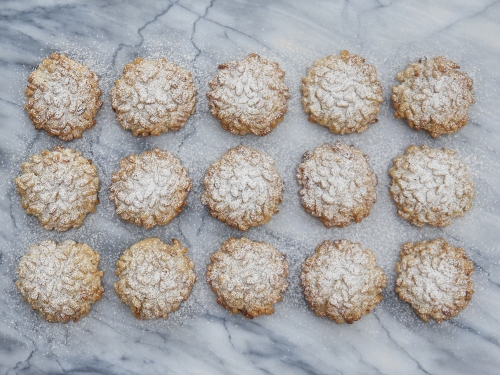
Pignoli originate from the island of Sicily in Southern Italy, where both almonds and pine nuts feature in local cookies. They’ve also made their way to the US, where there are also a favourite in Italian-American families at Christmas.
While my festive baking this year has included some complex bakes, pignoli are (comparatively) easy. One bowl, no resting, no chilling, just roll, coat in nuts and bake. And this is a delightful recipe as it gives you a lot of deliciousness for minimal effort.
When it comes to pignoli recipes, many are based on almond paste, which is mixed with sugar and egg whites. Almond paste is a 50/50 mixture of almonds and sugar, and not the same thing as marzipan here in Britain (marzipan here is typically 25/75 almonds to sugar). However, almond paste is not an ingredient that is easily available in stores here, so I’ve come up with an easy recipe that just uses ground almonds and sugar. It gets us to the same place, and I think it is easier – there is no need to break down a lump of almond paste into a smooth mixture. Essentially I’m offering a route that involves less work, getting you more quickly to delicious pignoli.

However, even if there is less work involved, we need to be honest. These are clearly luxury cookies. A good amount of almonds, and then lots and lots of pine nuts. This is not a cheap recipe, but hey, they are called pignoli and so pine nuts should be used generously. And you want them to taste of something. I tipped two large bags of pine nuts into a bowl for coating the cookies and assumed I had over-calculated. The rest could be toasted and sprinkled into a salad perhaps? But no. I think I ended up with about a dozen pine nuts left in the bowl at the end. So just a word of warning – get those nuts in, and don’t think you’ll be able to wing it with that half-used bag lurking in the baking cupboard.
If you want to play around with the flavours you can add lemon or orange zest, and they would still be pignoli. Or you could skip the pine nuts and use other nuts to coat the cookies – flaked almonds, or chopped hazelnuts, pistachios or cashews would all work – except that you’re then not making pignoli. They’ll still taste great, but they will be something else. This is, of course, a good way to make a batch of visually different cookies using one basic recipe (or if you ignored my warning and ran short of pine nuts…).
One final point worth knowing – there is no flour, butter or milk in pignoli so these little guys just happen to be naturally gluten and lactose-free. This makes them a great choice if you want to impress and you know someone who needs to avoid either in their diet.
To make Pignoli (makes around 20):
For the dough
• 2 large egg whites
• 175g ground almonds
• 100g icing sugar
• 100g granulated sugar
• 1/2 teaspoon almond extract
To decorate
• 200g pine nuts
• icing sugar
1. Preheat the oven to 175°C (345°F) and line a baking sheet with greaseproof paper.
2. In a large bowl, briefly whisk the egg whites until foamy. Add the rest of the dough ingredients and mix to a smooth dough. It should be sticky but you should be able to form it into balls. If too dry, add a little water. If too sticky, add a teaspoon each of ground almonds, granulated sugar and icing sugar and mix well.
3. Take a teaspoon of the dough (around 25g) and form into a ball. Roll in the pine nuts. Transfer to the baking sheet. Leave around 5cm between each cookie, and keep going until all the dough is used up.
4. Lightly press each cookie to flatten slightly, then bake for 15 minutes (turn the tray around half-way to get an even colour). When baked, remove from the oven, allow to cool on the tray. Lightly dust with icing sugar before serving.





